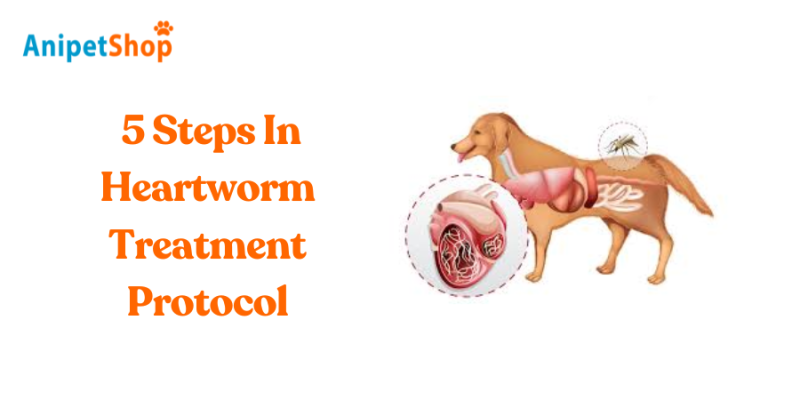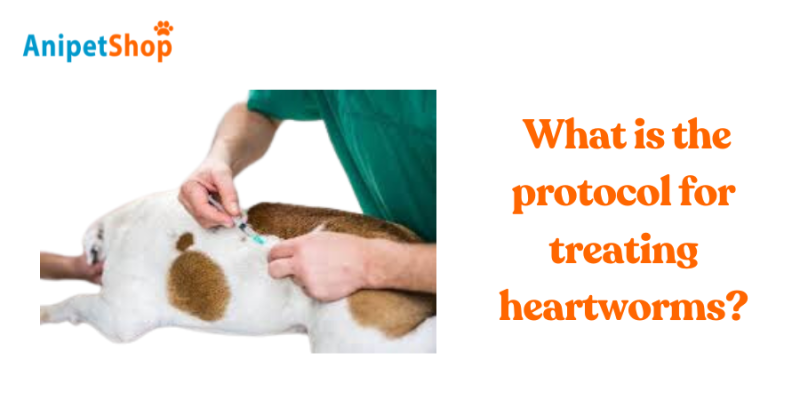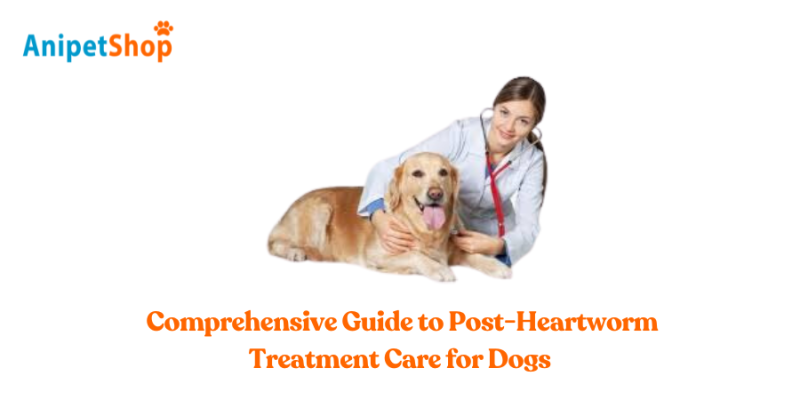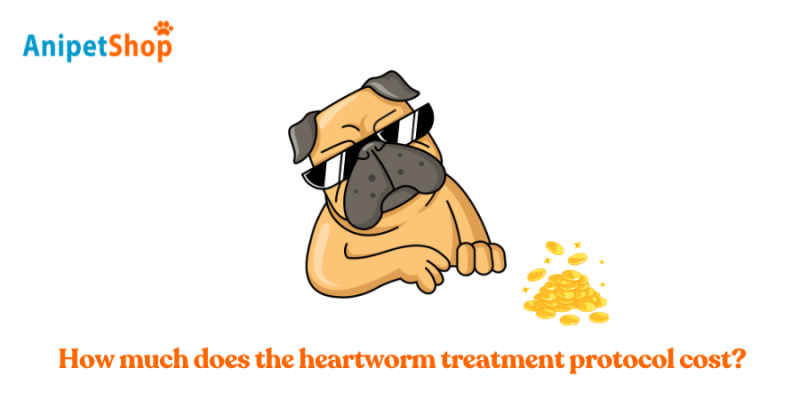5 Steps In Heartworm Treatment Protocol
When your dog is diagnosed with heartworm, the treatment protocol can be daunting. It usually involves five critical steps: a thorough diagnostic evaluation, stabilization, adulticide injections, monthly preventives, and possibly antibiotics.
First, a comprehensive diagnostic evaluation will assess the severity of the infection.
Next, stabilization ensures your dog is ready for further treatment.
Then, adulticide injections target and kill adult heartworms.
Monthly preventives stop larvae from developing into adult worms. Antibiotics may also be used to address any symbiotic bacteria.
Each step is crucial. Understanding how they work together ensures successful treatment.
Interested in the details? Let’s break it down further.

What is the protocol for treating heartworms?
Treating heartworms involves several steps to eliminate the parasites and prevent future infections. First, your vet will conduct a thorough diagnostic evaluation to confirm heartworm presence and infection stage. This typically includes blood tests, X-rays, and possibly an ultrasound.
If confirmed, and if your dog shows severe symptoms, the initial step involves stabilization. This might include medications to reduce inflammation and prevent secondary infections. Then, your dog will receive a series of injections containing adulticide, a drug that kills adult heartworms. These injections are carefully timed and monitored to minimize side effects and maximize effectiveness.
Before and after the adulticide treatment, your dog will take a monthly dose of heartworm-preventive medication. This stops new larvae from maturing into adult worms, breaking the infection cycle. Additionally, antibiotics like doxycycline may be prescribed to eliminate Wolbachia, a bacteria living symbiotically with the heartworms.
Throughout the treatment, exercise restriction is crucial to reduce strain on your dog’s heart and lungs. This comprehensive approach ensures the eradication of existing heartworms and prevents future infections.

Comprehensive Guide to Post-Heartworm Treatment Care for Dogs

After your dog’s heartworm treatment, it’s crucial to follow a structured care plan.
Begin with a pre-treatment checkup, follow the prescribed treatment, and ensure your dog gets plenty of rest during recovery.
Step 1: Pre-Treatment
Start by assessing your dog’s overall health to ensure they can handle heartworm treatment. This initial check-up is crucial for gauging the severity of the infestation and confirming your dog’s readiness for treatment. Your vet will likely perform blood tests, X-rays, and possibly an echocardiogram to get a comprehensive health profile.
Depending on the results, your vet might prescribe medications or suggest lifestyle changes before the main treatment. Common pre-treatment medications include antibiotics like doxycycline, which targets Wolbachia bacteria—symbiotic organisms within heartworms that cause inflammation. Anti-inflammatory drugs and heartworm preventatives may also be recommended to minimize complications.
A 2014 study by Dr. John McCall highlighted the importance of pre-treatment protocols in reducing risks and improving success rates. Ensuring your dog is in optimal health before starting heartworm treatment isn’t just a precaution; it’s essential.
Step 2: Treatment
Once your dog is deemed healthy for treatment, heartworm medication, typically melarsomine, is administered through deep intramuscular injections into the lumbar muscles. This standard protocol involves a series of injections to ensure the effective elimination of heartworms.
First, your dog will receive a single injection of melarsomine. One month later, two more injections follow, spaced 24 hours apart. This three-injection regimen, recommended by the American Heartworm Society, aims to kill adult heartworms while minimizing complications from dead worm fragments.
During this period, closely monitor your dog. Side effects like pain, swelling at the injection site, and temporary appetite loss may occur. More severe reactions, though rare, can include coughing, vomiting, or lethargy. Always maintain open communication with your veterinarian to manage any adverse effects promptly.
Melarsomine targets and kills adult heartworms, crucial for eliminating the parasite and paving the way for your dog’s recovery. Sticking to this treatment schedule is essential for success.
Step 3: Rest Period
Ensuring your dog has a strict rest period is crucial for their recovery after heartworm treatment. Reduced activity helps prevent complications, such as blood clots from dead heartworm fragments moving through the bloodstream. The American Heartworm Society emphasizes the importance of this rest period, which typically lasts about 30 days.
Your dog should avoid strenuous activities like running, jumping, or long walks. Instead, focus on short, controlled leash walks for bathroom breaks only. Keep your dog in a calm environment, minimizing excitement that could lead to sudden movements or bursts of energy.
Create a comfortable resting space in a quiet area of your home. If needed, use a crate to limit movement, but ensure it’s spacious enough for your dog to lie down and turn around comfortably.
Consistently monitor your dog for any signs of distress or complications. Maintain regular communication with your veterinarian during this critical period. This careful management is essential for a successful recovery.
Step 4: Post-Rest Period
After the rest period, it’s crucial to gradually reintroduce your dog to regular exercise for a safe and effective recovery. Your dog’s body needs time to adapt, so begin with short, gentle walks. Gradually increase the duration and intensity of these walks over several weeks. This slow approach reduces the risk of complications and helps your dog regain strength without overexertion.
Start with walks lasting 5-10 minutes. After a few days, if your dog seems comfortable, extend the walk by a few minutes each week. Closely monitor your dog for signs of fatigue or distress, and always consult your veterinarian before making significant changes to their exercise routine.
A typical transition period is around 4-6 weeks. Incrementally increasing activity levels during this time ensures your dog’s cardiovascular system and muscles adapt without undue stress. Remember, each dog is unique, so tailor the pace to your pet’s specific needs. This careful management, based on veterinary guidelines, promotes optimal recovery and long-term health for your canine companion.
Step 5: Re-testing for Heartworm
To ensure the heartworm treatment works, retest your dog exactly nine months after the initial injections. Testing earlier could give false positives, as the heartworm antigen test detects proteins from adult female heartworms. Dead worm remnants might still be in your dog’s bloodstream if you test too soon.
Re-testing at nine months also matches your dog’s annual check-up, making healthcare routines simpler. Annual testing is vital because untreated heartworms can be fatal. By aligning the retest with the yearly check-up, you confirm the treatment’s success and rule out lingering infections.
As a responsible adopter, follow through with this crucial step. Skipping the follow-up test can endanger your dog’s health, risking infection recurrence. A 2020 study by the American Heartworm Society found that consistent follow-up testing improves long-term outcomes for treated dogs.
How much does the heartworm treatment protocol cost?

Treating heartworm can cost between $500 and $1,500. Several factors influence this range. First, the severity of the infection significantly impacts costs. Advanced cases require more extensive treatment, which is pricier. Early detection helps keep expenses lower.
The size and weight of your dog also matter. Larger dogs need more medication, increasing the cost. Your location affects pricing too. Veterinary clinics in urban areas or places with a high cost of living may charge more than those in rural areas.
The specific treatment protocols and medications used can add to the expense. Some veterinarians use a mix of medications, including antibiotics, which can be costly. Follow-up care and re-testing are crucial parts of the treatment protocol, contributing to the total cost.
Keep these additional expenses in mind when budgeting for your pet’s heartworm treatment. By understanding these factors, you can better prepare for the financial commitment involved in treating your beloved dog’s heartworm disease.
Conclusion
Treating heartworms in your dog requires a dedicated approach. Following the heartworm treatment protocol, which includes diagnostic evaluation, stabilization, adulticide injections, monthly preventives, and antibiotics, is essential for managing and eliminating this serious condition. Your vet’s guidance is crucial throughout this process. With commitment and proper care, you’ll aid your furry friend in recovering and living a healthy, heartworm-free life. Don’t delay—begin the journey to better health for your dog today.
Lily Watson is an author specializing in veterinary care in Australia. With a profound passion for animal welfare and a solid foundation in veterinary science, Lily has dedicated herself to disseminating valuable knowledge and information for both pet owners and professionals in this field.

